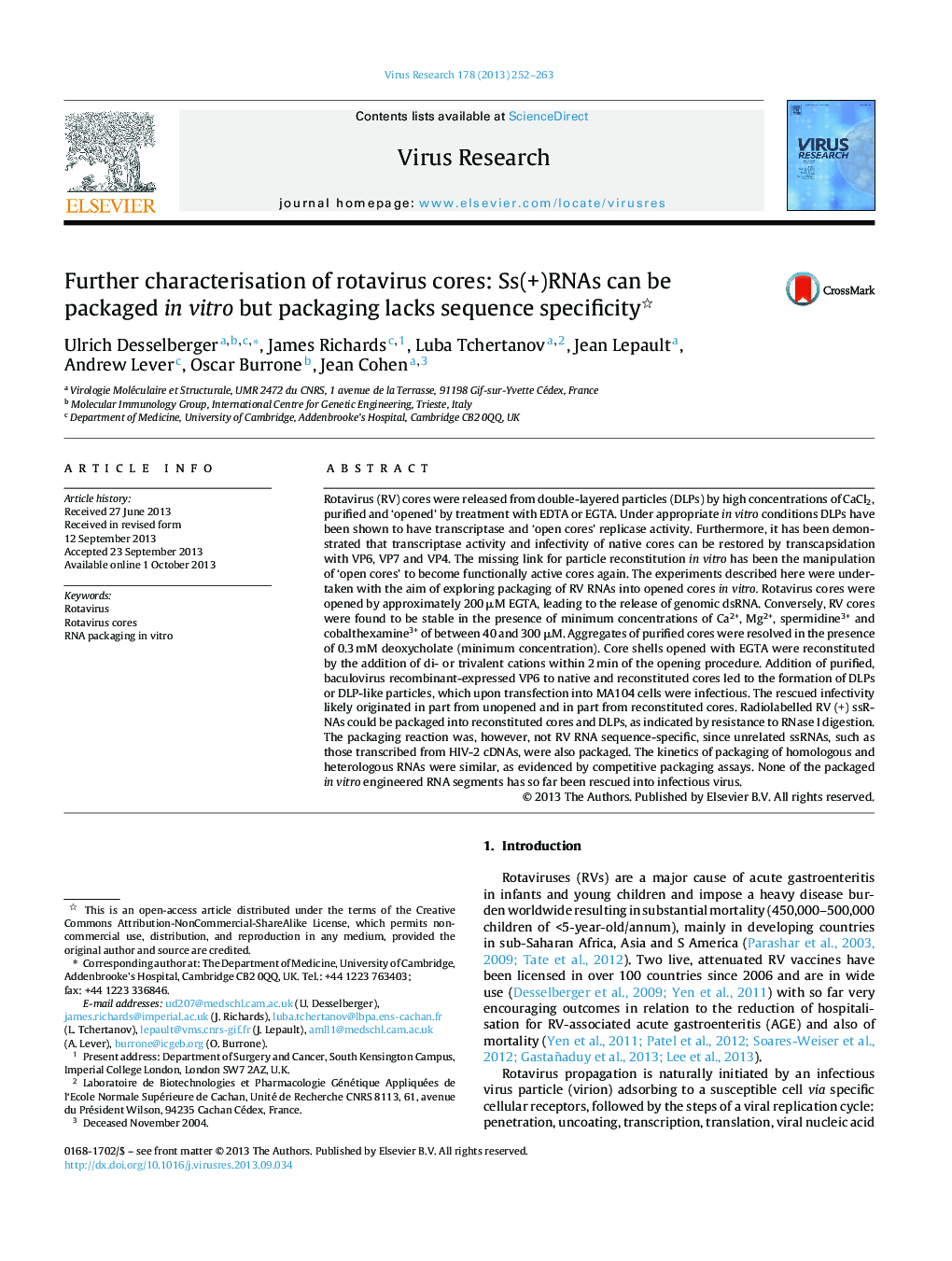| Article ID | Journal | Published Year | Pages | File Type |
|---|---|---|---|---|
| 6142667 | Virus Research | 2013 | 12 Pages |
Abstract
Rotavirus (RV) cores were released from double-layered particles (DLPs) by high concentrations of CaCl2, purified and 'opened' by treatment with EDTA or EGTA. Under appropriate in vitro conditions DLPs have been shown to have transcriptase and 'open cores' replicase activity. Furthermore, it has been demonstrated that transcriptase activity and infectivity of native cores can be restored by transcapsidation with VP6, VP7 and VP4. The missing link for particle reconstitution in vitro has been the manipulation of 'open cores' to become functionally active cores again. The experiments described here were undertaken with the aim of exploring packaging of RV RNAs into opened cores in vitro. Rotavirus cores were opened by approximately 200 μM EGTA, leading to the release of genomic dsRNA. Conversely, RV cores were found to be stable in the presence of minimum concentrations of Ca2+, Mg2+, spermidine3+ and cobalthexamine3+ of between 40 and 300 μM. Aggregates of purified cores were resolved in the presence of 0.3 mM deoxycholate (minimum concentration). Core shells opened with EGTA were reconstituted by the addition of di- or trivalent cations within 2 min of the opening procedure. Addition of purified, baculovirus recombinant-expressed VP6 to native and reconstituted cores led to the formation of DLPs or DLP-like particles, which upon transfection into MA104 cells were infectious. The rescued infectivity likely originated in part from unopened and in part from reconstituted cores. Radiolabelled RV (+) ssRNAs could be packaged into reconstituted cores and DLPs, as indicated by resistance to RNase I digestion. The packaging reaction was, however, not RV RNA sequence-specific, since unrelated ssRNAs, such as those transcribed from HIV-2 cDNAs, were also packaged. The kinetics of packaging of homologous and heterologous RNAs were similar, as evidenced by competitive packaging assays. None of the packaged in vitro engineered RNA segments has so far been rescued into infectious virus.
Keywords
Related Topics
Life Sciences
Immunology and Microbiology
Virology
Authors
Ulrich Desselberger, James Richards, Luba Tchertanov, Jean Lepault, Andrew Lever, Oscar Burrone, Jean Cohen,
